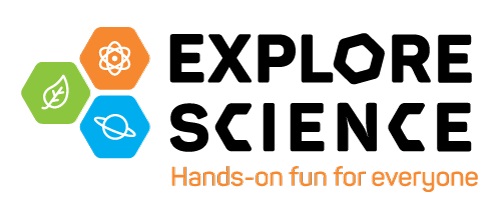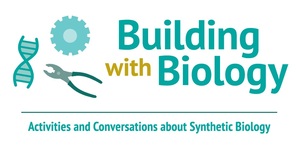Welcome to the monthly e-newsletter for the National Informal STEM Education (NISE) Network and community.
INSIDE THIS ISSUE
- Community News: Deadline approaching: Explore Science: Earth & Space toolkit applications due November 4th, Building with Biology engages youth through Teen Science Cafés, Museum & Community Partnerships project report reminder
- Upcoming Events: Generation Nano: Small Science, Superheroes competition now open
- Partner Highlights: Building with Biology within the Teen Science Café Network - Exploring the cool and the scary
- Featured on the Website: DIY Nano app featured on Boxlight Mimio's blog
- Science in the News: Makers of world's smallest machines awarded Nobel Prize in Chemistry, Tobacco plants engineered to manufacture malaria drug, Total solar eclipse 2017: Through the eyes of NASA, Have we found all the elements?
- STEM Throughout the Year: NISE Net's ideas for incorporating current science, engineering, and technology into holidays, seasons, annual events, and special events
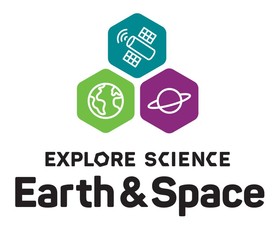 This is the last week to submit an application for NISE Network's newest
This is the last week to submit an application for NISE Network's newest
- For details about the toolkit, project timeline and requirements, opportunities for collaboration, and additional resources, visit http://www.nisenet.org/earthspacekit-apply
- Lights, Camera, Action! Training videos filmed for 2017 Explore Science: Earth & Space Toolkit blog post
- Learn more about this project and the contents of the toolkit by watching a recording of the Earth & Space Toolkit Online Workshop
- Applications are due Friday, November 4, 2016. Submit your toolkit application now
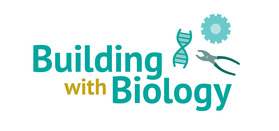
- Read this month's Partner Highlight to learn how adult mentors of teen science cafés were able to experience Building with Biology activities and forums first-hand.
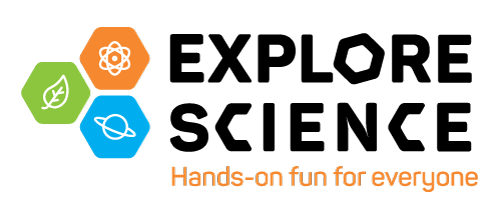 If you received a physical Explore Science: Zoom into Nano kit, please make sure that you complete your online project report here.
If you received a physical Explore Science: Zoom into Nano kit, please make sure that you complete your online project report here.The National Science Foundation and the National Nanotechnology Initiative issue a challenge to high school students to design a superhero with nanotechnology-enabled gear that addresses one of four possible societal missions: nanotechnology for justice, relief, health, or the environment. Visit the Generation Nano page to learn about entry guidelines, timeline, prizes, nano resources, and much more! Entries are due by January 31, 2017.
→ Building with Biology within the Teen Science Café Network - Exploring the cool and the scary
Social media NISE Network partner shout-outs
Don't miss Building with Biology today at Sci-Tech. #utsouthwestern #buildingwithbiology
UNL iGEM in Lincoln, NE
Had an awesome time teaching kids about #BuildingWithBiology at @MorrillHallUNL Museum Day Live!
Field Day Lab in Wisconsin
Check out @nisenet for cool open source works to explore, should help out educators looking for introducing STEM! http://nisenet.org/
Systems Sally in Massachusetts
SO much fun! And thanks to #BuildingWithBiology @museumofscience for working with #BioBuilder to develop this activity
Sarah Perdue in Madison, WI
So excited that I get to go to #BuildingWithBiology at @MadisonScience for @WiSciFest! I worked with @sciencemuseummn to develop some of it!
Dave Westenberg in Missouri
Great morning sharing #BuildingWithBiology activities for #ExpandingYourHorizons @nisenet @MissouriSandT #SeeDNA #SuperOrganisms
- NISE Network's DIY Nano app featured by Boxlight Mimio: Using Technology to Empower Science
Makers of world's smallest machines awarded Nobel Prize in Chemistry
Three scientists and colleagues have been awarded the Nobel Prize in chemistry based on their pioneering research in the development of nanomachines, the world's smallest tiny moving machines about one-thousandth the width of a strand of human hair. The Royal Swedish Academy of Sciences said in their award announcement that "in terms of development, the molecular motor is at the same stage as the electric motor was in the 1830s, when scientists displayed various spinning cranks and wheels, unaware that they would lead to electric trains, washing machines, fans and food processors." One day this technology may allow doctors to inject nanorobots into your bloodstream that are able to search for cancer cells or deliver drugs more efficiently, or lead to the creation of "smart materials" that change properties based on external signals [read more about the Nobel Prize in Chemistry for the development of nanomachines].
- See NISE Net-related activities and programs: Robots and People (NanoDays 2014), Is That Robot Real? children's book and poster, and Nanomedicine in Healthcare forum
Malaria infects more than 200 million people a year and kills more than 400,000, mostly in Africa and Southeast Asia, according to the World Health Organization. Artemisinin, a plant-derived compound that is a proven drug treatment against malaria, is often times not accessible to the people who need it, in part because of the challenges of growing the plant in malaria-stricken areas and the drug's high cost due the extraction process. Advances in synthetic biology have made it possible to produce artemisinin in yeast, but the manufacturing processes is difficult to scale up. Researchers have been able to produce it in tobacco but with low yields and also recognizing the difficulty of convincing people to eat tobacco plants. Next steps are to genetically engineer lettuce plants for producing artemisinin, which can in turn be turned into capsules for malaria treatment in a more cost-effective way [read more about engineering plants to produce life-saving drugs].
- See Building with Biology-related hands-on activities and forum: Kit of Parts, See DNA, VirEx Delivery, and Should We Edit the Genome? When, Why, and How Much? forum
Are you ready for a total eclipse of the Sun? Grab your proper eye protection or pinhole card because on August 21, 2017, a total solar eclipse will be visible along a narrow path from Oregon to South Carolina in the United States. A total solar eclipse is a rare and exciting event in which the Moon completely blocks the Sun, temporarily turning daytime into nighttime. The Sun is 400 times wider than the Moon but it is also 400 times farther away from Earth than the Moon, so when the Sun and Moon align along the same plane in space and the Moon passes between Earth and the Sun, the Moon appears to be the same size as the Sun causing a total solar eclipse to occur. Visit https://eclipse2017.nasa.gov/ to learn more about solar eclipses, events taking place nationwide, how to get involved or plan your own eclipse party, and to explore educational resources.
- Apply for an Explore Science: Earth & Space Toolkit (deadline November 4th) for the opportunity to receive a physical toolkit of hands-on activities designed to engage the public in Earth and space sciences through activities and materials that can be used for yearlong celestial events, including the 2017 total solar eclipse! Learn more about how to apply
- The NISE Network is currently developing a short guide to help museums and planetariums plan an eclipse event as well as online workshops that provide information on hosting an event when your local astronomers have left for the path of totality. Over the next couple of months we'll be posting the guide and all eclipse related information on our event page here: http://www.nisenet.org/events/other/solar-eclipse-august-21-2017, and online workshop opportunities here: http://www.nisenet.org/events/online-workshop.
This newest Reactions video created by the American Chemical Society discusses how elements have previously been discovered, the four elements that have recently been added to the periodic table this year, and the challenges of identifying new elements [watch this short Reactions video, Have we found all the elements?].
STEM THROUGHOUT THE YEAR
- Exploring Materials: Thin Films hands-on activity
- Colors at the Nanoscale: Butterflies, Beetles and Opals short activity
- Butterfly Blues video
- Biomimicry: From Nature to Nanotech short activity
- Would you Buy That stage presentation
- Kitchen Chemistry live presentation
Do you have something you would like to submit for inclusion in the NISE Network monthly e-newsletter? Please send your announcements, articles, or community opportunities to Kayla Berry at kberry@mos.org.


